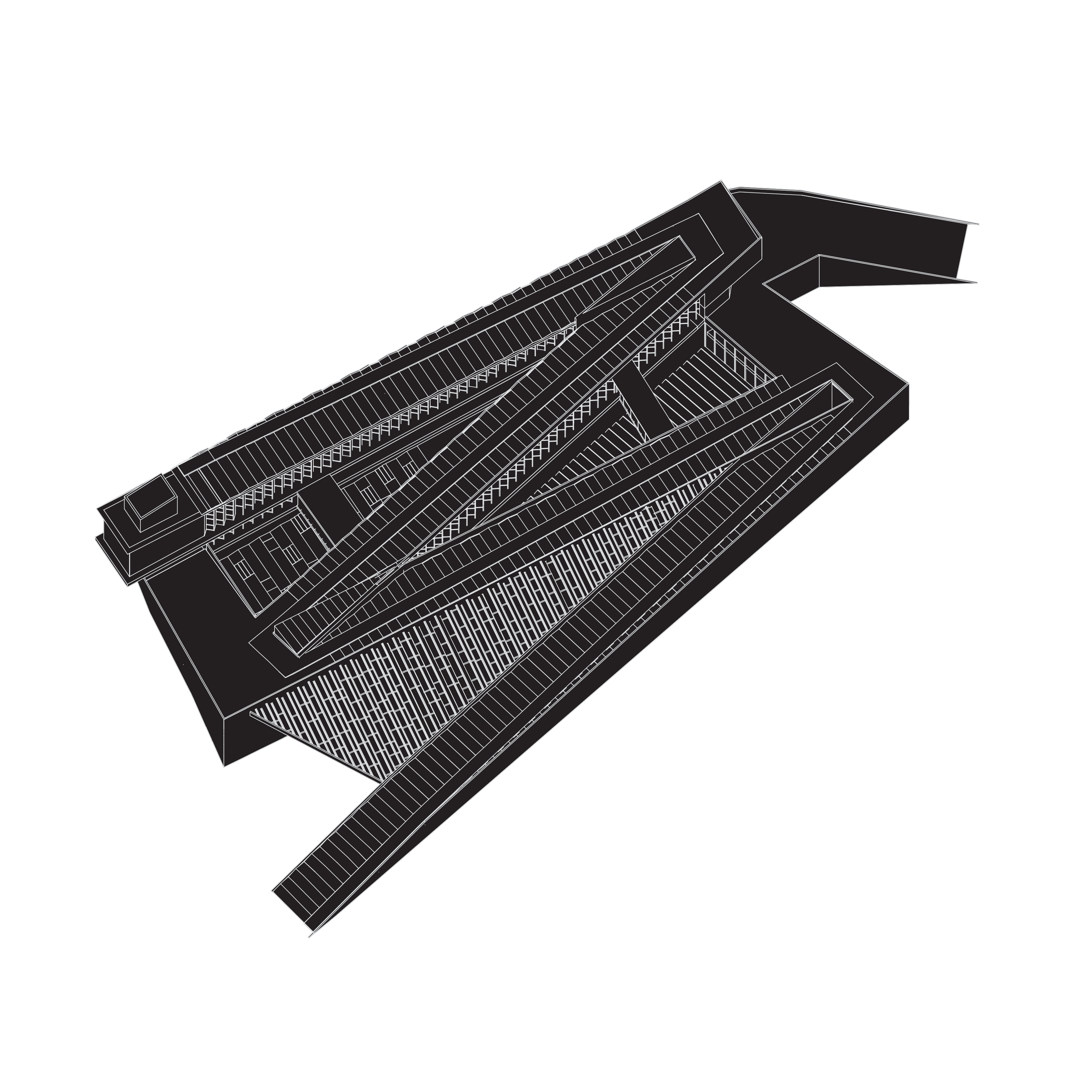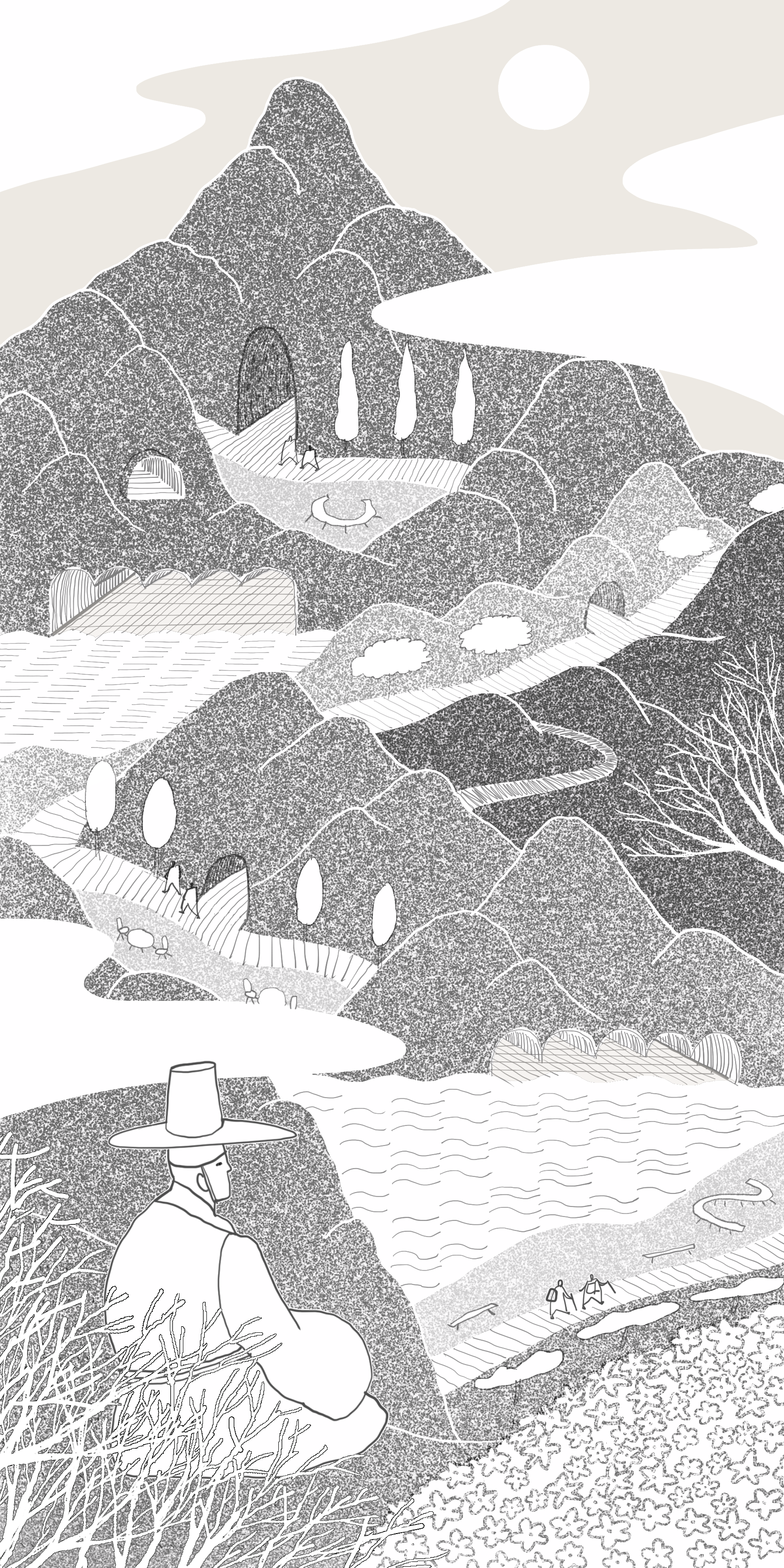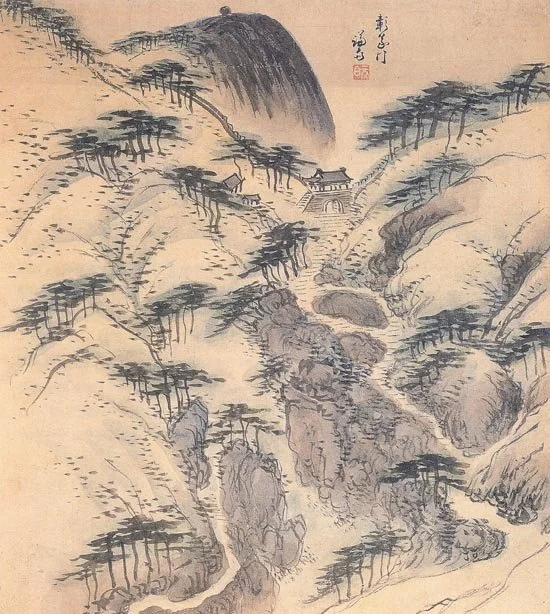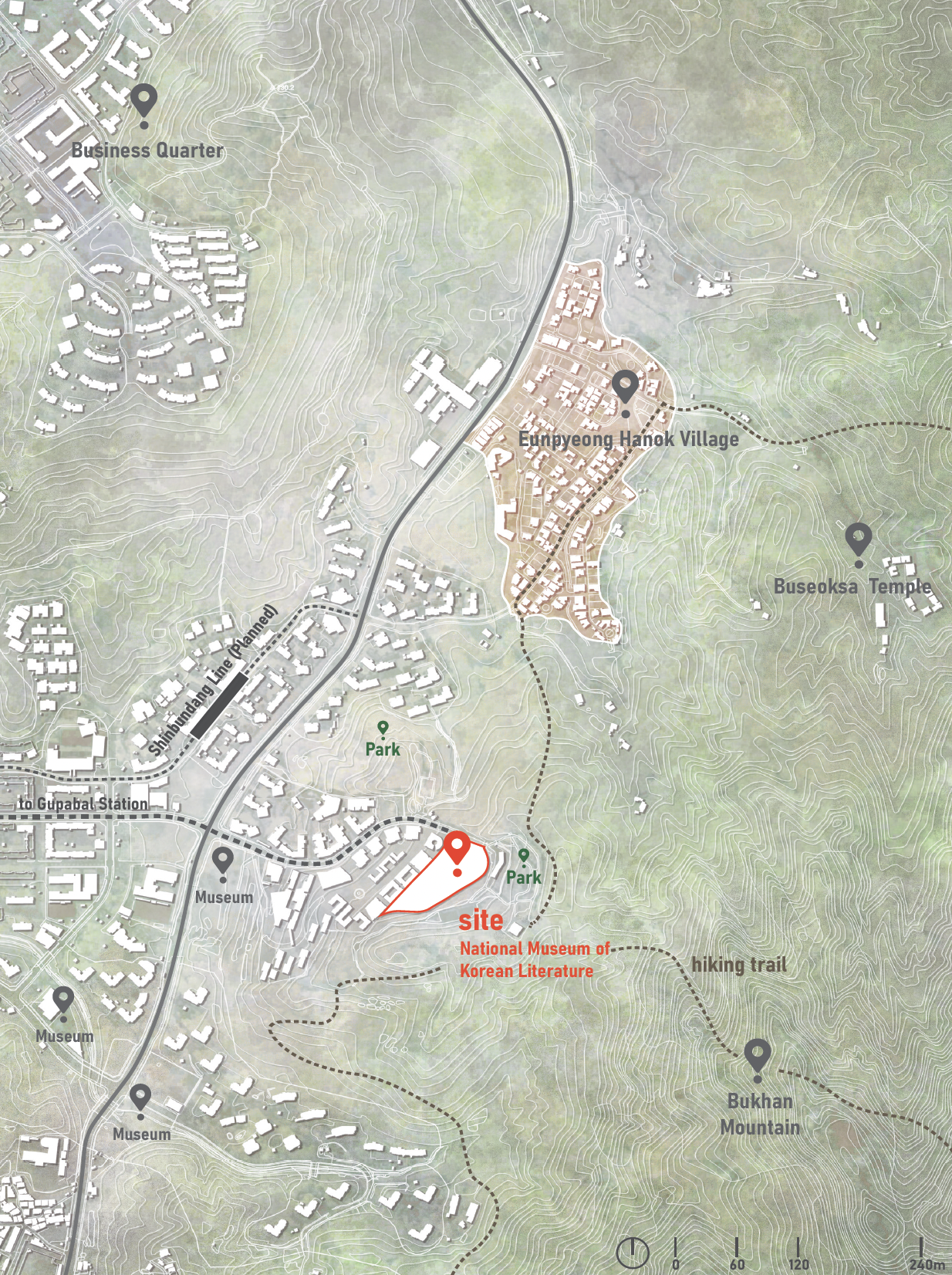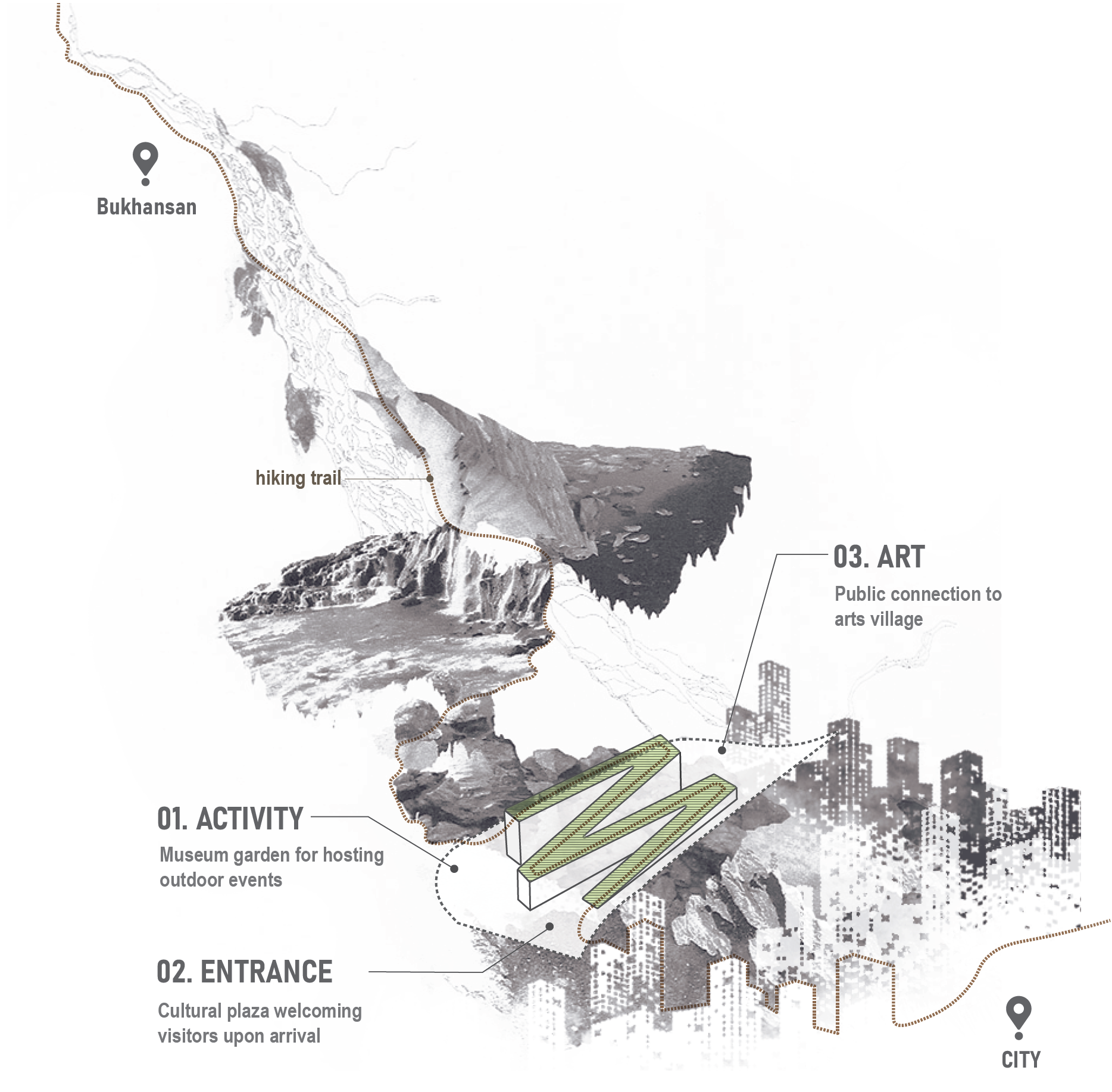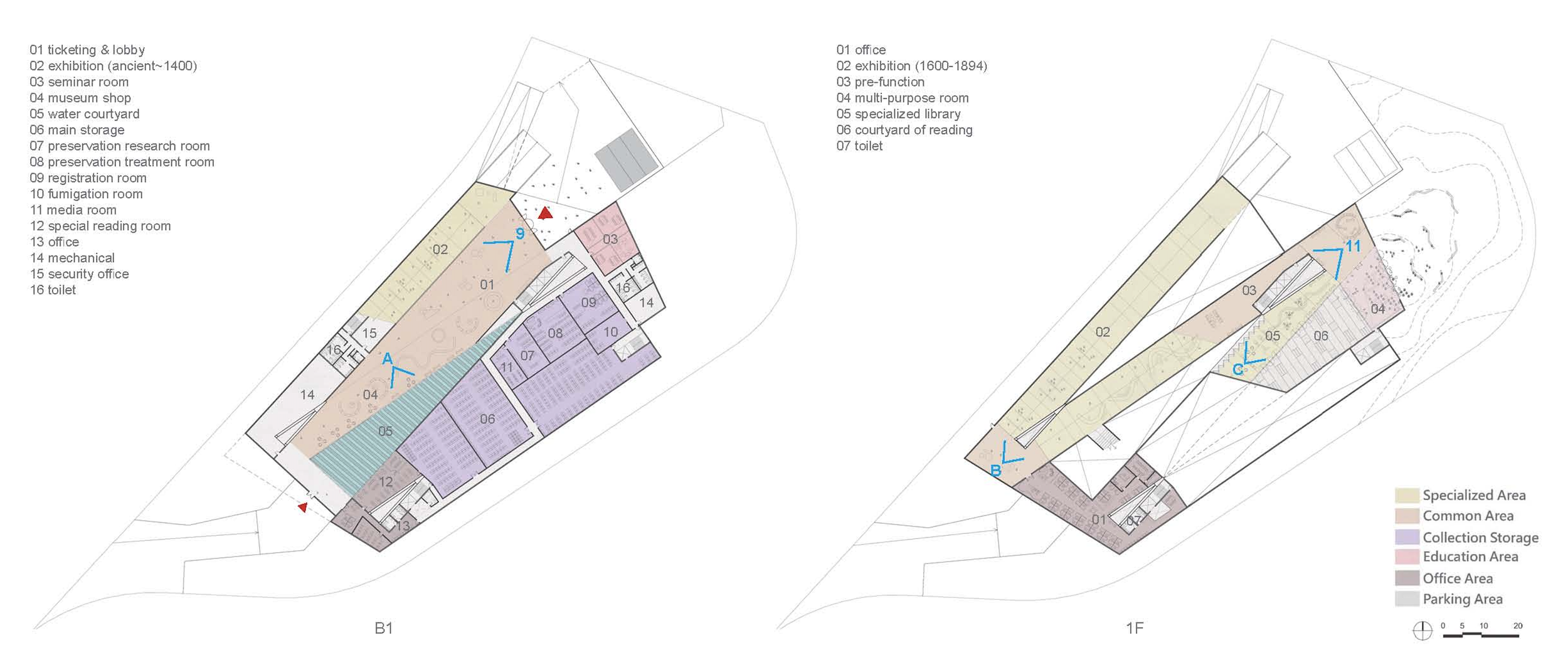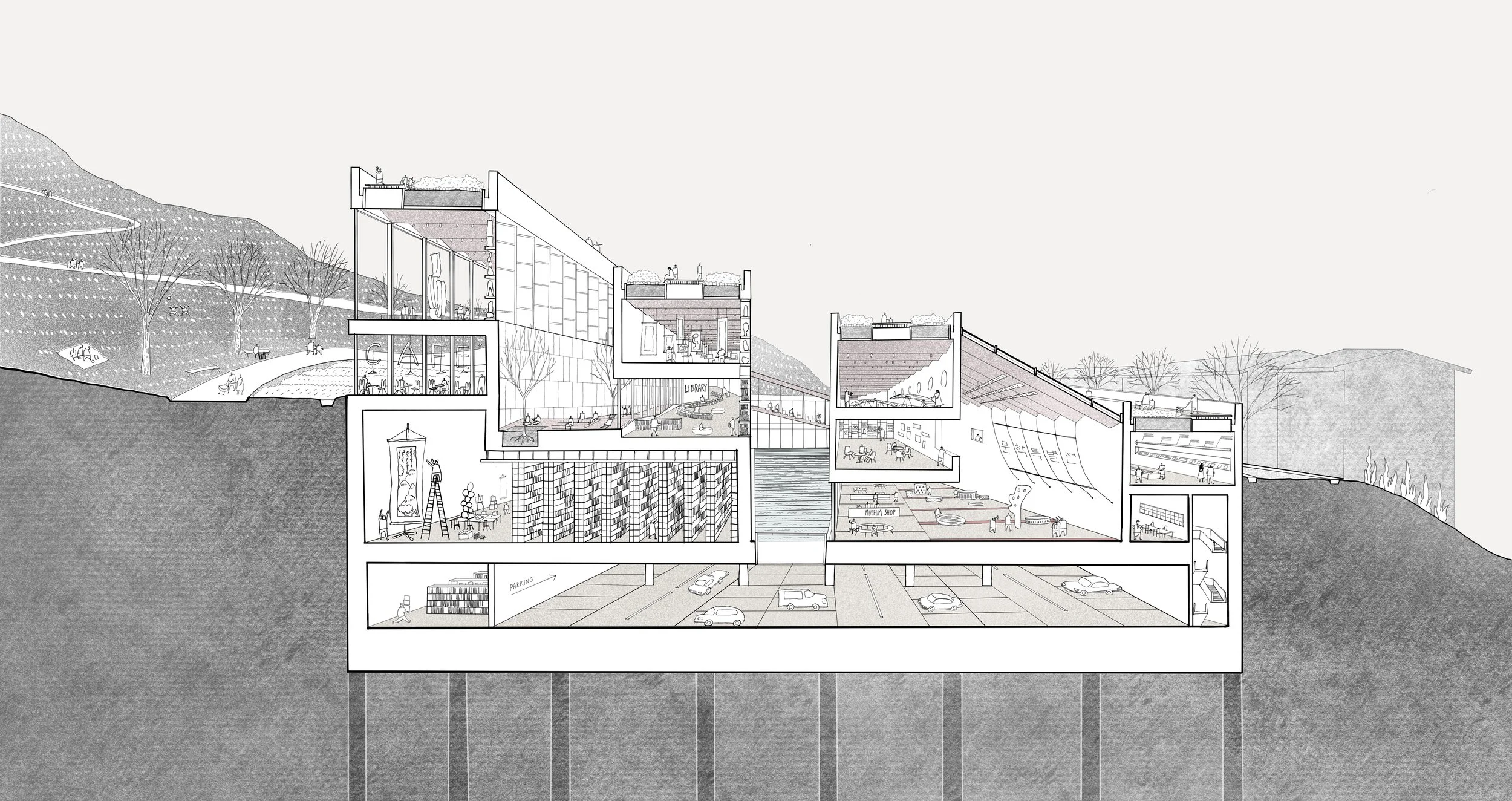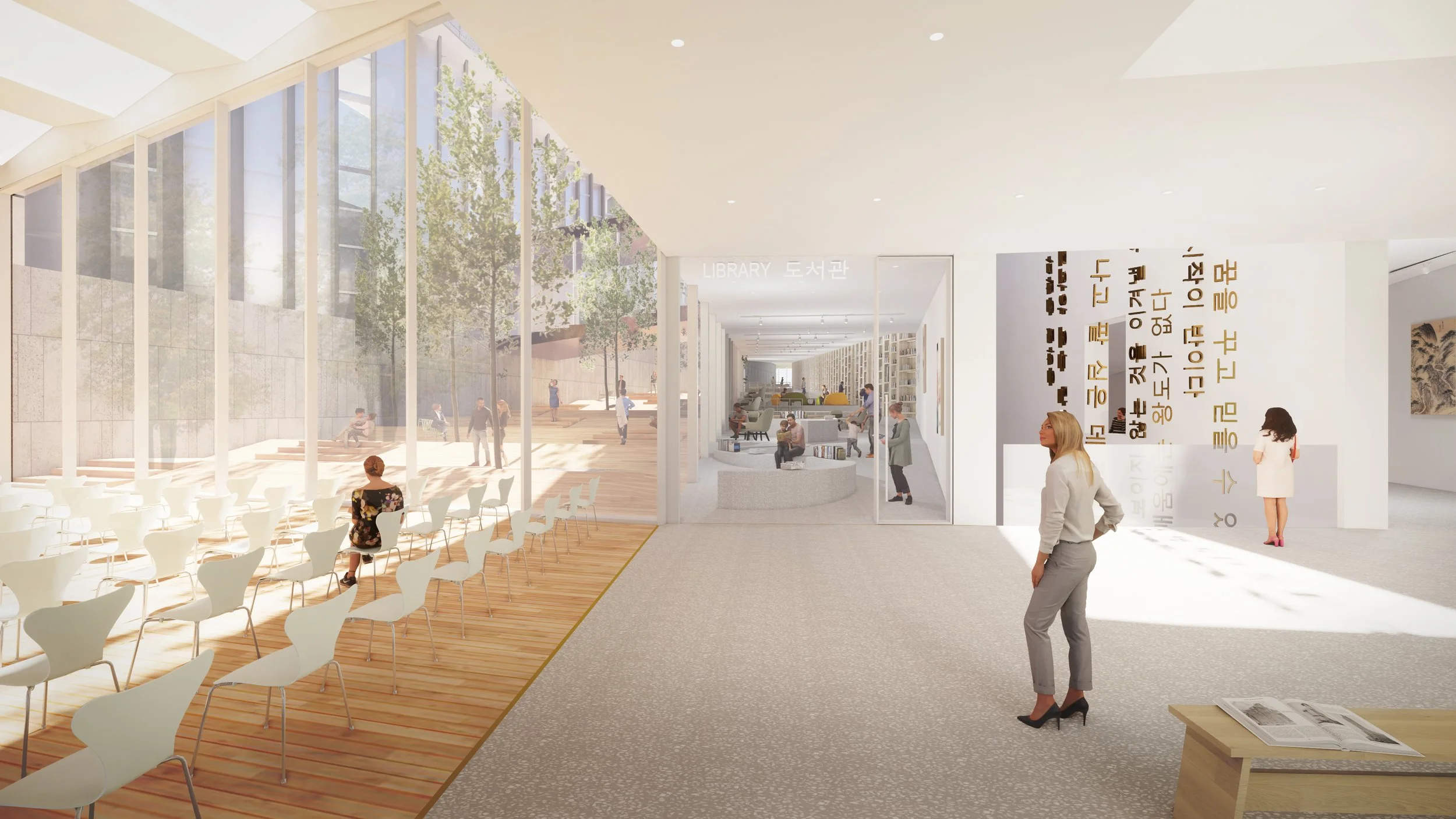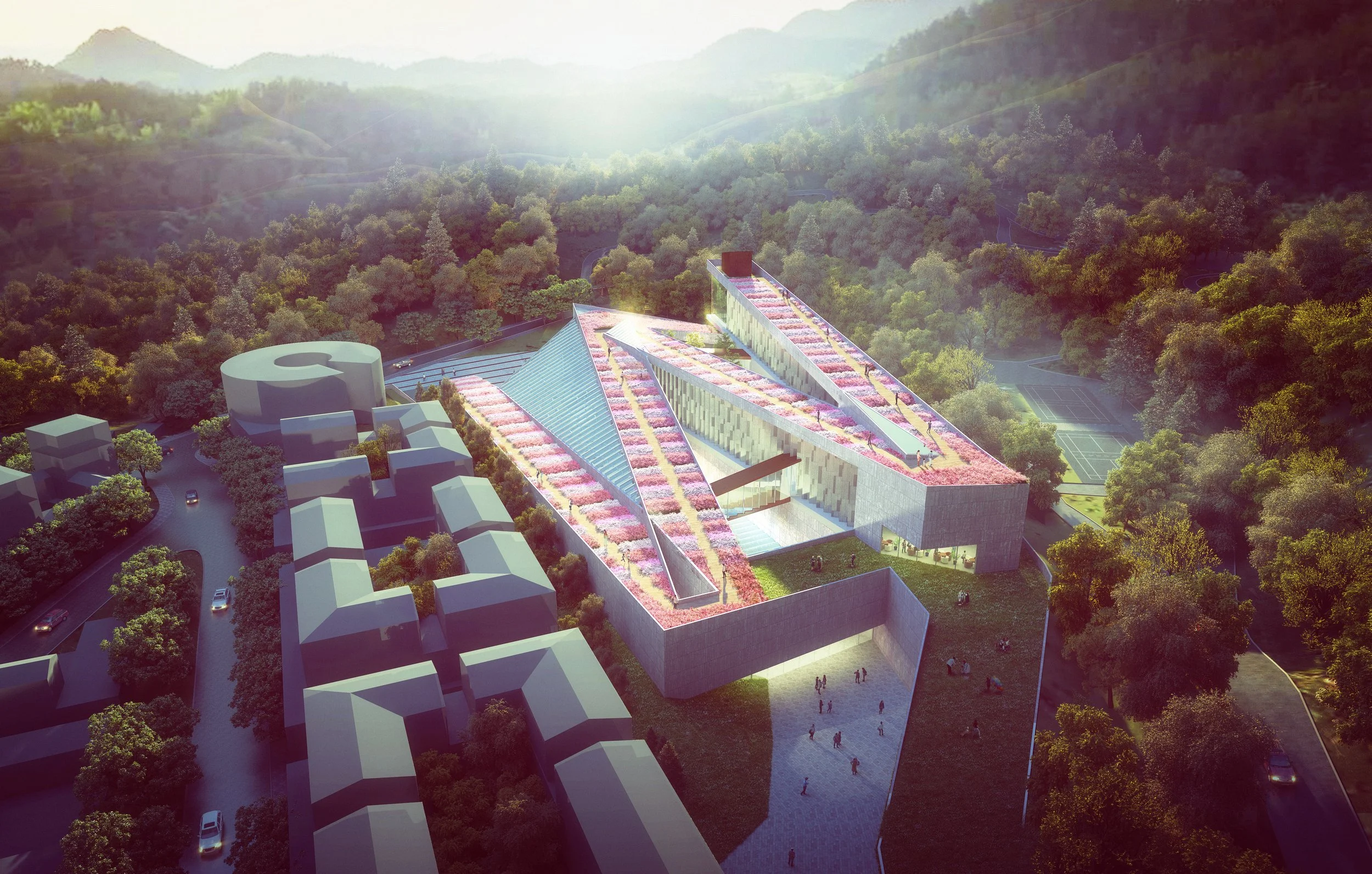
National Museum of Korean Literature
In Search of a Literary Mountain
Unfolding Cultural Richness Through Architectural Design
With three-quarters of its topography consisting of elevated terrain, mountains have always held a special meaning in Korean culture and literature. The design for the National Korean Literature Museum takes full advantage of its natural surroundings and the nation’s cultural heritage to create an experience of ascending a literary mountain in the shadows of Bukhansan.
Unique among world literature, Korean literature encompasses works written in three languages: ancient transcriptions, Chinese and Hangul, so the depth and breadth of the museum’s subject matter is difficult to appreciate at first glance. Therefore, the museum should present an easily accessible route that will provide a comprehensive overview while allowing for in-depth exploration.
-
2021
-
International Competition
-
National Museum
-
Seoul, Korea
-
Professional work at JJP Architects & Planners and collaborated with POSCO
Landscape design by YIYU Design
Experiencing Literature with Folded Routes and Courtyards
The design accomplishes that objective in its purest form by adopting a continuous exhibition path over four levels. Inspired by the cultural heritage of bookbinding – from the oldest surviving woodblocks and first movable metal type printing, to the folding of pages and unique covers. The project becomes an assemblage of Korean literature’s tangible components. The folding circulation route also encloses two distinct courtyards, one with a cascading water feature and the other a terraced garden, that offer moments of respite and contemplation through the interaction of indoor and outdoor spaces.
Shaping Cultural Landmark: The Museum as a Seasonal Park
The museum's organization strategy gives form to the overall massing, which fits harmoniously in the hillside setting. The rooftop of the museum features a zigzagging path through a cascading garden that is integrated with the structural and skylight systems and filled with vegetation that reflects the seasons. The museum not only serves as a cultural landmark but also as a part of the system of hiking trails leading to Bukhansan National Park.
